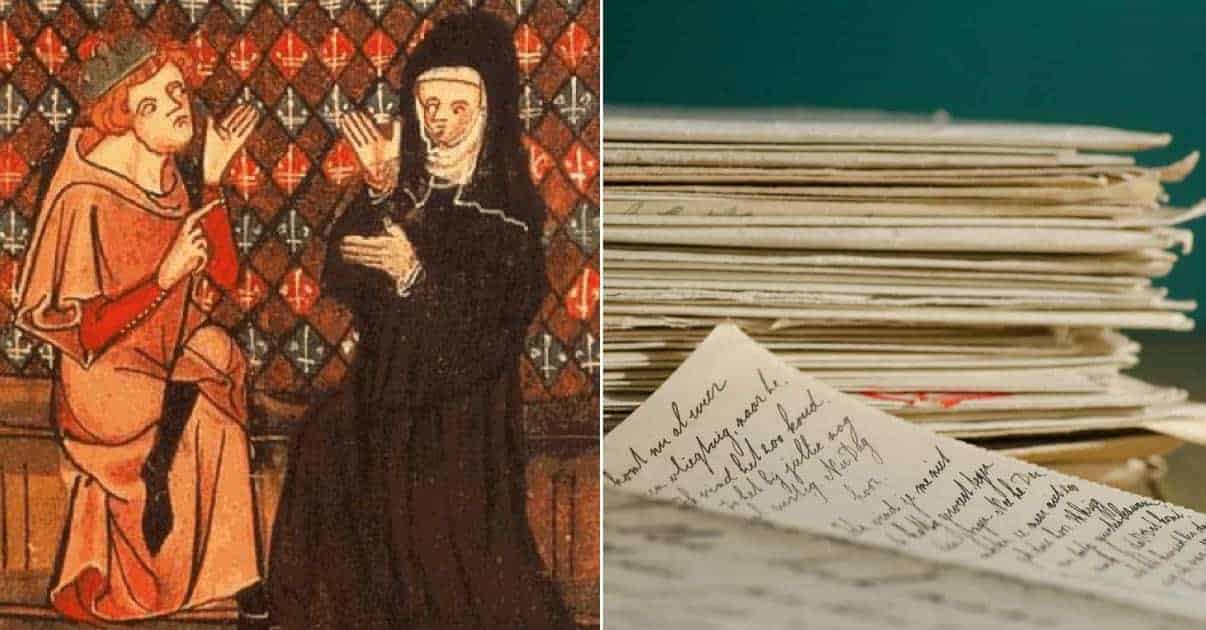Ever since writing was invented, people across the ages have penned letters to the objects of their desire- many inspired by very different motives. Some historical love letters were outpourings of heartfelt passion or expressions of sexual desire. Others were missives used to court advantageous alliances couched in the language of love- or using a more direct approach. Then, there are those letters which were merely a subtle- or not so subtle attempt to lure someone into bed.
These letters give much more than a snapshot of a lover’s feelings. They preserve love stories that would otherwise be lost to history and provide an insight into the private side of historical characters invisible in other sources. Love letters can also preserve for posterity, many of the private and often peculiar peccadillos that individuals may well have preferred to remain secret! These past billets-doux are a perfect way of rediscovering the romantic- and not so romantic ideals of love and relationships from across the ages. The following ten examples give us a snapshot of the scope and variety of love letters across time.

Henry VIII’s Love Letters to Anne Boleyn
The marriage of Henry VIII and Anne Boleyn came to a messy end when he had her beheaded on May 19, 1536, for adultery, treason, and incest after nearly three years of marriage. However, Henry’s early love letters to Anne, show that, for the King at least, their relationship was rooted deeply in passion from the very beginning. Henry wrote the letters, of which there are seventeen between 1527 and 1528. They show not only the romantic nature of Henry but also how quickly his thoughts moved from bedding to wedding his future Queen.
The letters show a vulnerable side to the monarch who history came to view as cruel, capricious and tyrannical in his declining years. But in 1527, Henry was thirty-six, still handsome and athletic. He had never had a problem ‘wooing’ any other lady. However, Anne proved more resistant to the lure of his charms- and his position. Henry’s first surviving love letter to Anne has him “beseeching” her “earnestly” to “let me know expressly your whole mind as to the love between us two.” For over a year, Henry admitted, he had been “stricken with the dart of love.”
Henry was enquiring-very prettily- if Anne would have sex with him. He could not call her, ‘mistress” he claimed, until she gave herself up to him “body and heart.” As a sweetener, Henry promised Anne she would become his one and only lover. However, Anne was not about to become another notch on Henry’s bedpost. Henry continued his pursuit, regardless. “ To cause you yet oftener to remember, me, I send you… a buck killed late last night by my own hand, ” he wrote, keen to prove his manly prowess in some way, “hoping that when you eat of it, you may think of the hunter.”
He must, however, have had some hope, for soon he was calling Anne not only ‘mistress‘ but ‘darling.’ Ann seems to have thawed, and a letter of July 1527 gives some hint of why. “Shortly, you and I shall have our desired end,” The matter of an annulment was already on Henry’s mind, and 1527 was the year he sent William knight to Rome to sue for a dissolution of his marriage to Katherine- and a dispensation to marry again. The couple could only wait. In the meantime, the wooing continues.
In the summer of 1528, sweating sickness broke out, and Ann was ill and confined to Hever Castle. Henry sent frequent letters, passing on news of the court and his continuing affection. However, by August, the letters indicate a change. It seems the combination of time apart and the prospect of marriage had driven the couple’s relationship up a notch. One note, in which Henry details how much he is missing Ann begins, “Mine own sweetheart,” and ends “wishing myself (especially an evening) in my sweetheart’s arms, whose pretty dukkys I trust shortly to kiss.”
One of the first love letters to survive shows that seduction was not always about romance- but religion.

